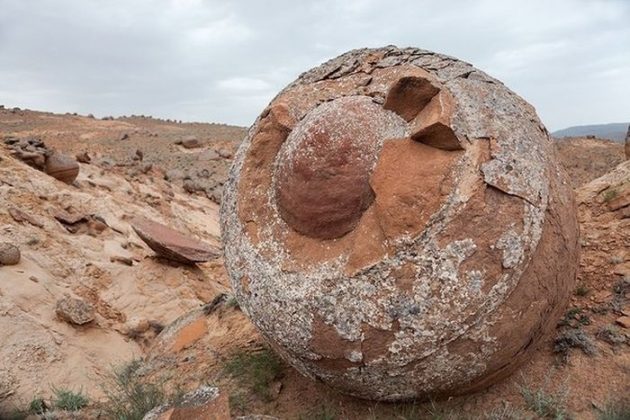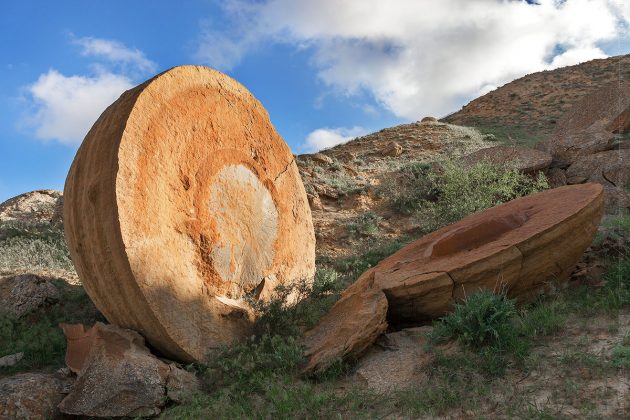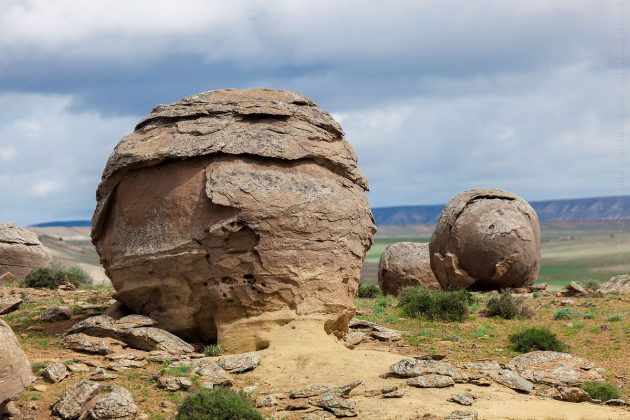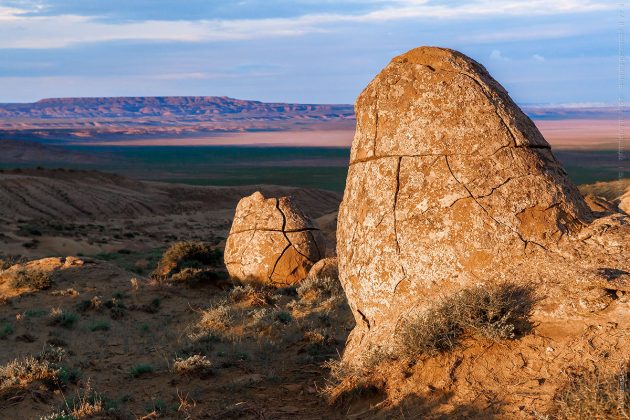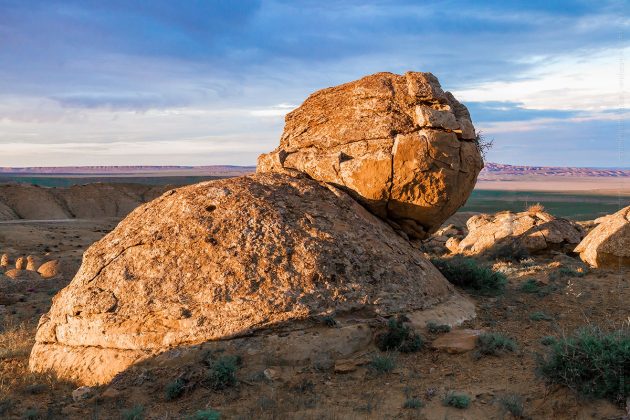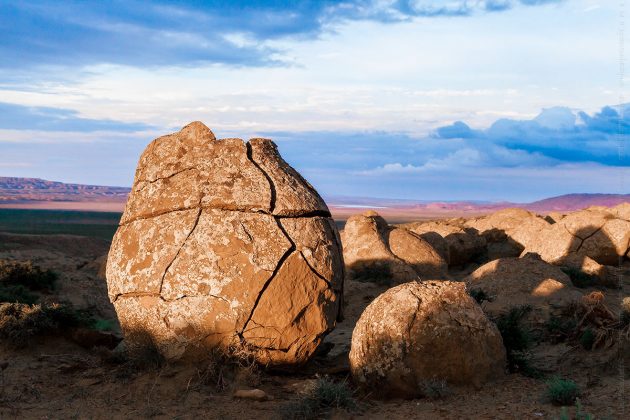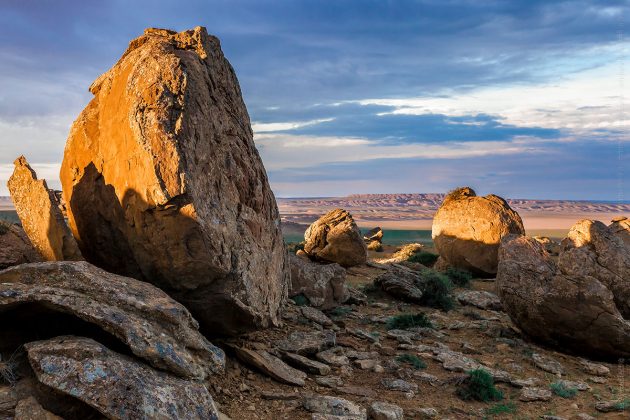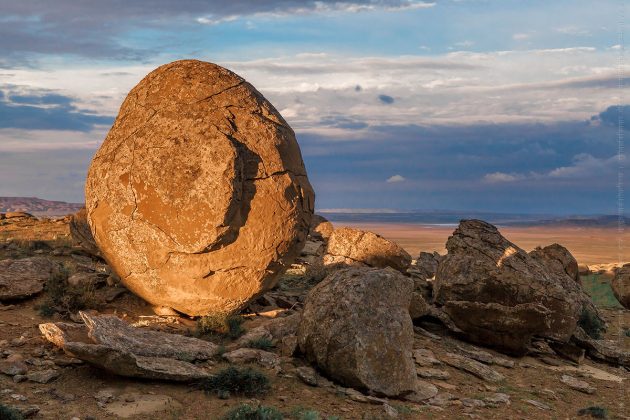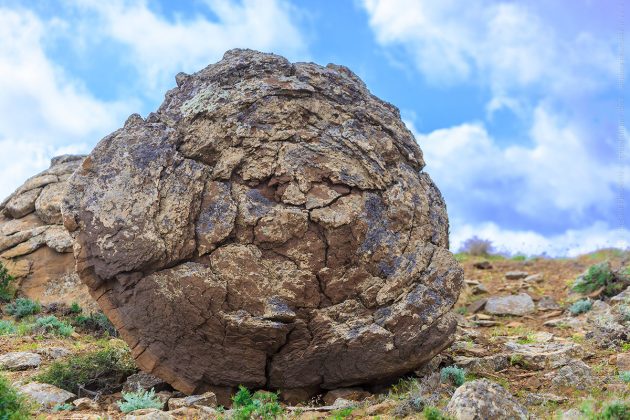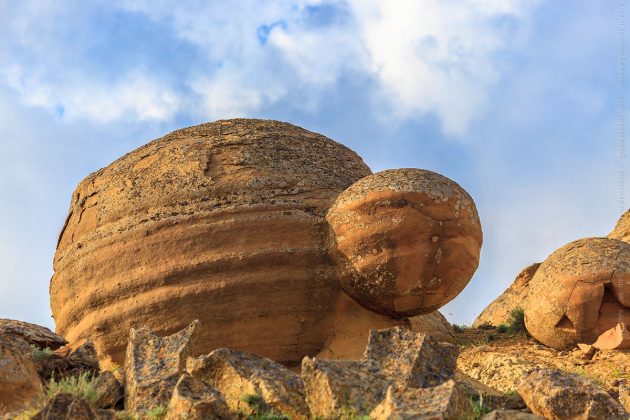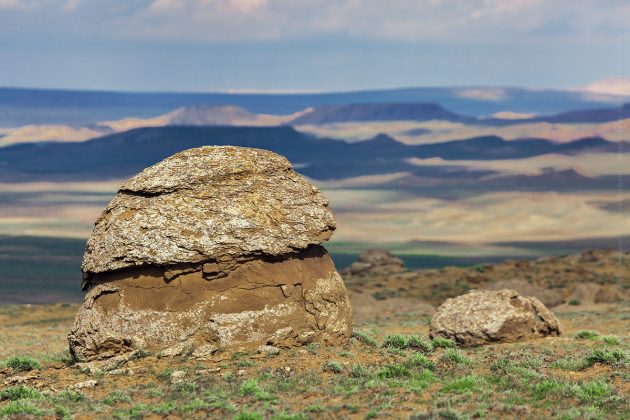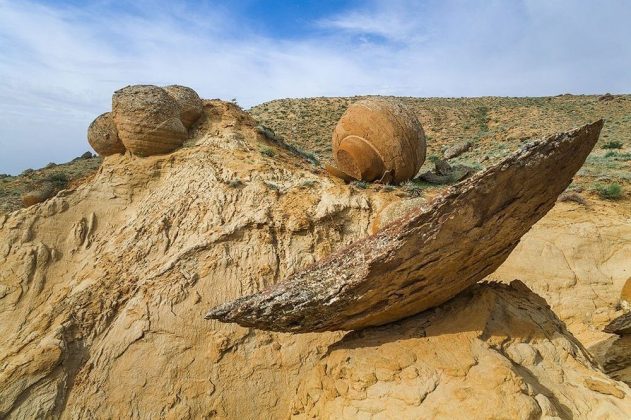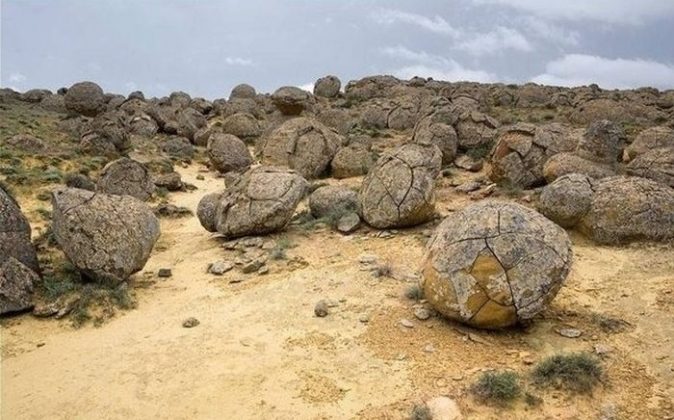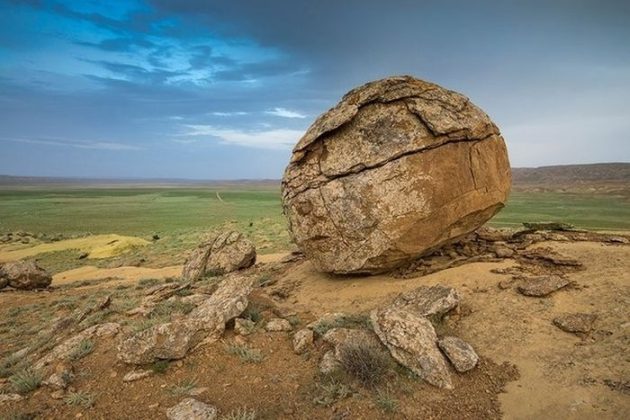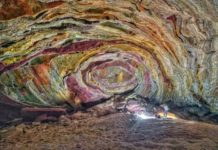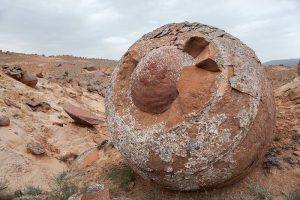
The Mangystau region of Kazakhstan, near the borders of Turkmenistan and Uzbekistan, is a huge, empty place. In total, it covers 165,600 square kilometers – an area larger than England.
The geography of the region varies between tundra, grasslands, epic mountains and dusty, dry barren wilderness.
The size of spherical concretions is up to 4 meters in diameter. The time of origin is about 180-120 million years ago. Concretion – from the Latin word “concretio” – fusion, thickening.
They are round-shaped mineral formations found in sedimentary rocks, formed, for some not entirely clear reason, around grains of minerals, shells, teeth and bones of fish, plant residues, etc.
How concretion occurs:
“A concretion is a compact mass of mineral matter, usually spherical or disk-shaped, embedded in a host rock of a different composition. This hard, round mass of sedimentary rock cement is carried into place by ground water. Concretions, the most varied-shaped rocks of the sedimentary world, occur when a considerable amount of cementing material precipitates locally around a nucleus, often organic, such as a leaf, tooth, piece of shell or fossil.”


